Hey Everybody! Bill Uhler here from The Music Gallery. Today's video is another in a series that I'm doing for beginner guitar players. The song I am doing today is He There Delilah by The Plain White T's.
We are capoing in this song. If you don't know what that means, this little gadget here is called a capo:
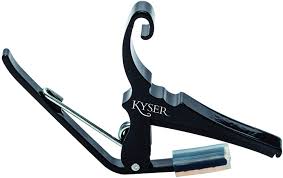
It clamps over the strings and basically allows us to play chords we've already learned in the first position in different keys. If we put the capo on the second fret and play the C chord grip, it's technically sounds a D chord. You can hear that is has a higher pitch. Using a capo is kind of like changing the tuning on your strings by raising them up.
Lets break down this tune.
First, we have a C chord going to an E minor chord.
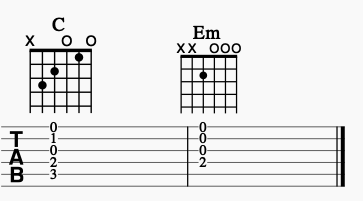
C has the first finger on the second string, first fret; Second finger on the fourth string, second fret; and third finger on the fifth string, third fret.

we're only going to strum the E minor chord from the fourth string. You might have learned the E minor chord using all six strings like this:
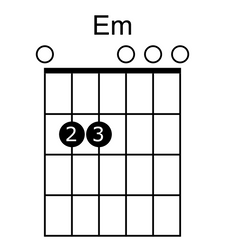
But we are going to play it a little differently for this song. Like this
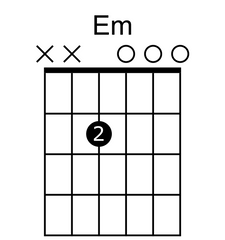
From there, we'll go into an A minor chord
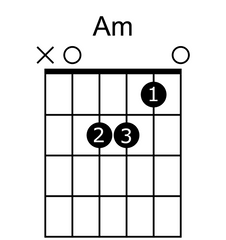
The A minor chord has the first finger on the second string, first fret; second finger on the fourth string, second fret; and third finger on the third string, second fret.
When we're going from A minor into F, it's actually 3 beats on the A minor and one beat on the G, which passes into F.
The other chord in this tune is the F chord. Most beginners learn their by placing their first finger over the first two strings like this:
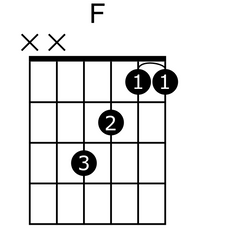
But in the song, we are going to use our thumb and go over the top of the neck so we can catch the F note on the first fret of the sixth string. We are not going to use the first string.
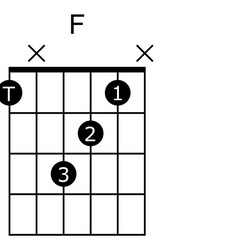
So that is a muted 1st string; first finger at the second string, first fret; second finger at the third string, second fret; third finger at the fourth string, third fret; and the thumb is wrapped around to the sixth string, first fret. Using the thumb like this might take some getting used to. I remember when I first started using the thumb. It hurt a little bit, but you'll get used to how its supposed to feel the more you use it.
From there, we go to a G chord. For G, we are going to mute out the fifth string and we'll use an usual fingering for this one. Let's put the pinky on the first string, third fret and the third finger on the sixth string, third fret.
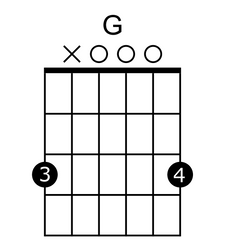
I'm not so sure they're using the 1st string at all for this chord in the recording, but I like to put it there because you'll at least hit a right note if you strum through rather than a high E.
The full progression will look like like this
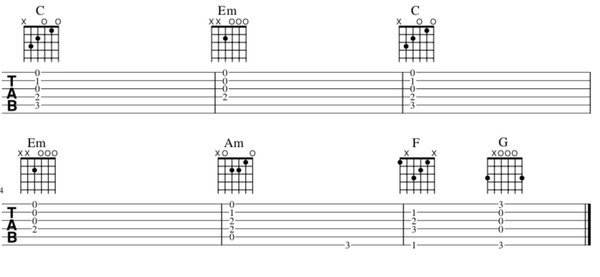
Let's talk about the strumming on this one. In the intro and verse section, we're going to strum the fifth string on the C chord and then the third and second string. You'll bounce back and forth from strumming the fifth string to strumming the second and third string.

If you happen to hit fourth string, it will still sound okay. It doesn't sound like they're hitting that fourth string in the recording though.
When we go to the E minor, we are only going to strum the fourth string and then the second and third strings will be strummed open.
This technique is called a Bass-chord technique. So you play the bass note by itself then the rest of the chord.
From there we go to an A minor chord. You'll play the fifth string open and then strum the second and third string. Even though I have my second finger down on that fourth string, I'm going to skip over it. If you're a beginner, don't worry about skipping of the fourth string. It will still sound good if you hit all the strings.
From there, we go to an F chord. I'm hitting the sixth string only and then strum the second and third strings again. Then I'll go to a G chord hitting the sixth and second and third strings. Then it goes right back to C
The original tempo is about 106 bpm. I'd recommend dropping it down to about 70 and building it up from there
When we get to chorus its a C chord, then the G note by itself, followed by the A minor chord. Then we'll do a little walk up note. Its the note B, which is at the fifth string, second fret.
Thank you so much for watching this video. If you have any questions or would like the transcription to this song, please contact me. Thanks for viewing and have a great day!
